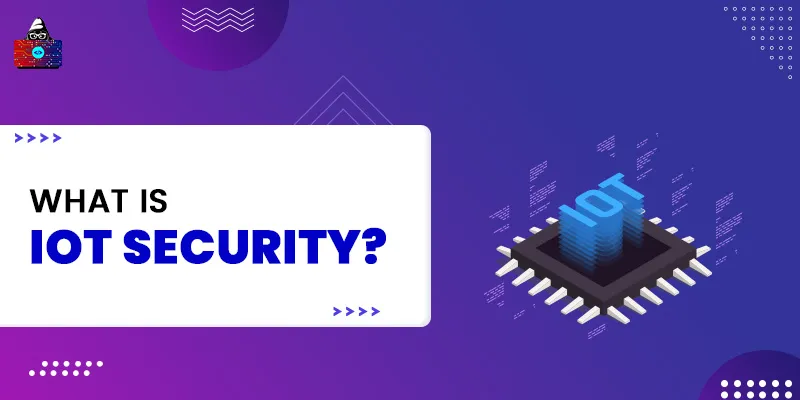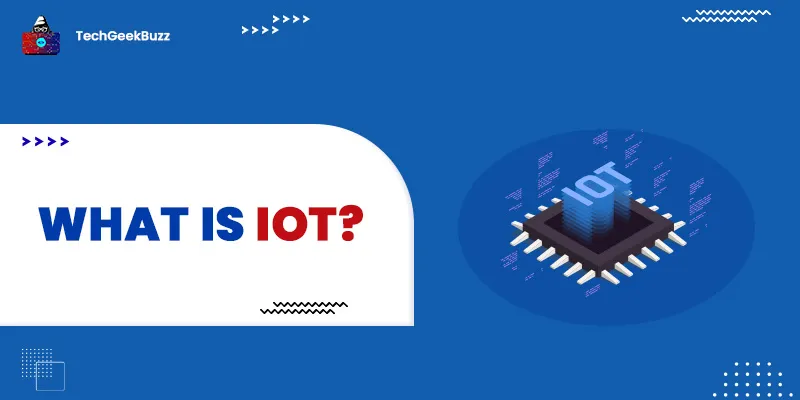The Internet of Things (IoT) is the modern age technology that connects billions of machines and devices, enabling them to exchange information and communicate with each other via the internet. In the Internet of Things, a thing could be an automobile having built-in sensors, an animal with a biochip transponder, or a person with a heart monitor implant.
Businesses and organizations are increasingly leveraging the IoT technology to understand their customers, carry out their operations effectively, provide improved customer services, enhance the decision-making process, and ultimately, the value of the business. If the devices connected to the internet are not secured and protected properly, they may open up to various vulnerabilities.
There are numerous incidents where attackers used a common IoT device to attack or threaten the whole network. Therefore, it has become essential to protect and safeguard IoT devices and the networks to which they are connected.
This article intends to answer certain questions, including what is IoT security, what are some significant IoT security issues and challenges, and how to safeguard IoT devices from security threats.
What is IoT Security?
IoT security is an approach to protecting IoT devices and the networks to which the IoT devices are connected. Alternatively, we can say that IoT security is a collection of strategies and techniques that help to safeguard IoT devices from data breaches and attacks. Also, it focuses on fixing the security vulnerabilities of IoT devices and networks.
Following are some typical IoT threats and breaches:
1. WiFi Firmware Bug
It is the most recent IoT security threat. The WiFi firmware bug surfaced in 201, and it affected the Marvell Avastar 88W8897 chipset. This chipset is currently deployed in numerous devices, such as PlayStation 4, Xbox One, smartphones, and Samsung Chromebooks. This bug affects the chipset’s firmware, allowing attackers to run malicious code without any user interaction.
2. Bluetooth Exploit
Bluetooth exploit is yet another recent IoT threat in the Bluetooth protocol discovered in July 2019. This threat adversely affected Windows 10, macOS, and iPhone users. With this threat, attackers were able to track users and expose their personal data.
3. Silex Malware
This IoT security threat tends to make IoT devices inoperable. It destroys infected devices’ storage, deletes network configurations, drops firewall rules, and hampers the functioning of devices. To overcome this issue, the users of the infected devices need to reinstall the hardware manually, which is an intimidating task.
4. Spying through Smart Assistants
Smart devices, like Alexa and Google Home, experienced various exploits in 2018. These exploits enabled attackers to track users and steal their confidential data.
IoT Security Challenges
Though the benefits that IoT offers are undeniable, the uncertainty about security practices, high-profile attacks, and corresponding costs are the factors that keep businesses away from adopting this technology. Below are the most common IoT security challenges that lead to major IoT security threats:
1. Lack of Physical Hardening
One of the most significant concerns in IoT devices is physical hardening that occurs because the devices are deployed remotely. Unauthorized users can manually tamper with the devices that are made available to the public without any security measures. Therefore, it is essential to consider the accessibility of IoT devices before implementing physical hardening.
2. Botnet Attacks
Malicious hackers primarily aim to damage or threaten IoT devices by creating a botnet. They generate a botnet by introducing malware in the connected devices, and they manage these connected devices using a control server and command. Therefore, once hackers create a compromised system in a network, all other devices on a network have greater chances of being infected.
Botnet attacks are destructive. Mirai Botnet, an attack in 2016, had shut down a vast portion of the internet, including CNN, Netflix, Twitter, major Russian banks, and many other sites. To avoid botnet attacks or prevent IoT devices from being used as bots, it is necessary to check whether they are routinely patched and monitor traffic for abnormal behavior of devices.
3. No Visibility
One of the most crucial challenges that security teams face is the invisibility of all IoT devices connected to a network. Therefore, if there is no visibility of devices, it becomes challenging to identify and respond to suspicious or malicious events. In such a circumstance, there is a need for visibility tools, like network access control (NAC).
4. Lack of Encryption
Encryption is the key to data security. However, it is pretty challenging to implement encryption for IoT devices because many IoT devices on a network do not have storage capabilities or processing capabilities. Therefore, malicious hackers can break encryption keys or alter encryption algorithms.
5. Industrial Eavesdropping
IoT devices, especially with audio or camera feed, serve as one of the most extensive data sources for malicious hackers. Therefore, it becomes essential to protect devices having sensitive information. One of the methods to deal with this problem is to encrypt the feed whenever possible.
Best Practices for IoT Security
Here are some effective practices that can help you to protect devices and networks from IoT threats and breaches.
1. Use Security Analytics
IoT security analytics can significantly reduce the risk of IoT breaches and threats. It focuses on collecting, correlating, and analyzing data across various data sources. We can visualize IoT activity, detect suspicious events, and respond to, and manage possible IoT threats using the information processed using security analytics. The foremost thing to remember while using IoT security analytics is to monitor sensor CPU activity, IoT gateways, and in-memory processes.
2. Create Visibility
In general, lack of visibility for IoT devices is one of the most significant challenges. Therefore, you need to use dedicated visibility tools when working with IoT devices.
For example, Network Access Control (NAC) is a dedicated visibility tool. It is a collection of tools, protocols, and processes that monitor access to resources used in a network. In addition, it provides access control solutions to various types of network-connected resources, such as network routers, IoT devices, conventional servers, and PCs.
3. Ensure Protected Communication
It is essential to ensure that there is protected communication between different IoT devices, users, and networks. Having protected communication helps to make sure that malicious hackers cannot intercept or manipulate the data exchanged between the devices on a network.
The best approach to protect communication is to adopt robust encryption algorithms like AES 128 or AES 256 for your devices. Moreover, you need to ensure that encryption keys are rotated periodically and are not hardcoded.
4. Implement Segmentation
Segmentation means segregating system components and applying security measures to each layer of devices in order to protect the system and sensitive data stored in it. Implementing segmentation lowers the chances for attackers to peep into the system and track different components.
Moreover, segmentation helps in reducing the spread of the attack as it isolates problematic devices and turns them offline immediately. It would be pretty helpful if you segment IoT devices according to their categories, such as data-collection, infrastructural, or user endpoints.
5. Security Gateways
The use of security gateways is another potential practice to ensure IoT security. They are mediators between the network and IoT devices. Generally, IoT devices have lower processing and memory capabilities than security gateways. Therefore, by using security gateways, you can implement firewalls on IoT devices to make sure that hackers cannot access the devices in the IoT network.
6. Ensure Device Authentication
Another effective practice to avoid IoT threats is to employ device authentication measures. Some device authentication measures include digital certificates, biometrics, multi-factor authentication, etc. Device authentication measures ensure that malicious attackers cannot access data stored in devices.
Conclusion
Though IoT is one of the most advanced technologies and offers various benefits, poor security measures make it breachable. The above-mentioned IoT security challenges, including lack of encryption and physical hardening, no visibility, and botnet attacks, are some risk factors that could create massive exploits. IoT security has become a significant concern these days.
We have mentioned some effective practices that you can follow to protect your IoT devices against malicious attacks. However, research is still in progress on how to monitor IoT-related threats and how to secure IoT systems more effectively. As IoT is a developing technology, it is obvious that security measures are subject to change from time to time.
People are also reading:





Leave a Comment on this Post